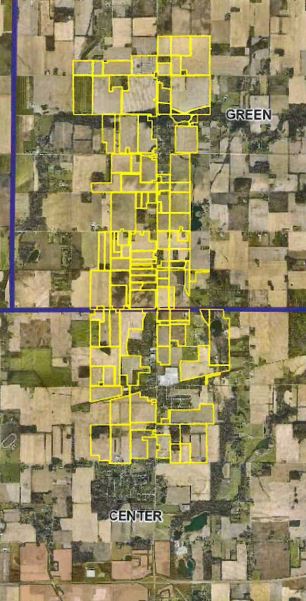
HANCOCK COUNTY – County officials have identified new potential areas for incentivizing development in an effort to get ahead of a forthcoming state law.
The law, which goes into effect on July 1, lets the Indiana Economic Development Corporation establish innovation development districts.
In such a district, property taxes from new development would go into a fund to be used in the district, like the tax increment financing districts that counties, cities and towns use to collect funds for infrastructure in areas targeted for commercial and industrial development.
At least 12% of the new property taxes collected by an innovation development district would have to go to the taxing units with territory in the district.
Revenue from state income and retail taxes resulting from new development in an innovation development district would be able to go into a statewide innovation development district fund.
If the expected total costs and benefits of proposed investment in an innovation development district are over $2 billion, the state can create and manage the district on its own without the involvement of local leadership. If it’s less than $2 billion, state and local leadership would have to enter into an agreement over governing the district, but both scenarios have Hancock County officials concerned about ceding control to the state.
The state would not be able to create an innovation development district in an area in which a local tax increment financing district is already established. That has prompted Hancock County officials to set the groundwork for establishing tax increment financing districts in areas where the state may find an innovation development district tempting.
Before the county can create a tax increment financing district, it first has to establish an economic development area. The Hancock County Redevelopment Commission approved resolutions last week identifying two new economic development areas. One is nearly 4,000 acres in eastern Buck Creek Township and slightly into western Center Township. Another is about 4,620 acres along State Road 9 in Center and Green townships north of Greenfield.

Brad Armstrong, a member of the redevelopment commission, noted the measures allow the county to create tax increment financing districts in those areas.
“Nothing will happen unless there’s development,” Armstrong said. “It basically earmarks the area for future development and allows the county to benefit from that rather than the state.”
The Hancock County Area Plan Commission approved an order Tuesday night in support of the economic development areas and advocating that they are consistent with the county’s comprehensive plan. An attendee of the meeting and commission members had questions about the placement of certain boundaries making up the western area, but no one from the redevelopment commission was on hand to ask.
Michael Long, president of the plan commission, said despite his questions about some boundaries, he feels the areas are consistent with the comprehensive plan. He added neither area would cause confusion when considering recommendations on potential land rezones – a primary duty of the plan commission.
Armstrong told the Daily Reporter that much of the thought process behind which parcels were included in the proposed areas had to do with isolating land that property owners would target for development.
Long and Gregg Morelock, the plan commission’s lawyer, suggested avoiding residential properties was also likely a factor. Those typically aren’t included in tax increment financing districts, as their values tend to fluctuate more than undeveloped ground. If a bond were posted to fund a project with tax revenues from the district slated to pay off the debt, and property values went down, it could compromise the ability to make payments.
The proposed western area is near an already quickly growing part of the county, but the proposed area north of Greenfield shows promise too, Armstrong said.
“That’s been an area that’s been on the radar for a few years,” he said, adding NineStar Connect’s ability to provide utilities there is one of the driving factors. “It’s on a state-maintained road. The proximity between Greenfield and Anderson — I think that’ll be an area in the future that will develop.”
Part of the proposed western economic development area wraps around the home of Pat Sullivan, who attended Tuesday’s plan commission meeting. Along with questioning the placement of certain borders, he also said he feels the new law addressing the innovation development districts calls for more cooperation from the state than county officials give it credit for. He questioned the likelihood of the state even wanting to establish such a district in the county as well.
“I’m not a real big fan of what seems to be a hurry to get ahead of a train that may not be coming,” Sullivan said
Randy Sorrell, executive director of the Hancock Economic Development Council, sent letters to the county redevelopment commission in support of the proposed economic development areas.
“You obviously have recognized the development potential of the area and are taking a proactive approach to ensure the area grows in the best possible manner,” Sorrell said in his letters.
The Hancock County Board of Commissioners will consider the proposed areas in a special meeting at 4 p.m. Tuesday, June 14 at the Hancock County Annex, 111 American Legion Place.
The county redevelopment commission will have a public hearing on the areas at 10 a.m. Monday, June 20 at the Annex. After the hearing, the commission will take final action by confirming, modifying and confirming, or rescinding the resolutions it approved last week.




